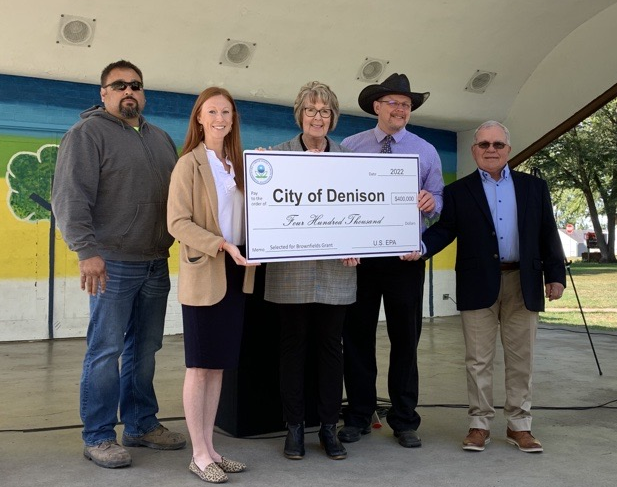ATLANTA (30 de septiembre de 2022) – La Agencia de Protección Ambiental de Estados Unidos (EPA, por sus siglas en inglés) está coordinando estrechamente con socios federales, estatales, locales y tribales tras el paso el huracán Ian y recuerda a las comunidades, familias y propietarios de negocios afectados por el huracán que tomen medidas para que la limpieza después de la tormenta sea lo más segura y efectiva posible.
“Las actividades de limpieza relacionadas con el regreso a los hogares y negocios después de un desastre pueden plantear importantes desafíos ambientales y de salud”, indicó el administrador de la Región 4 de la EPA, Daniel Blackman. “La EPA está lista para ayudar a nuestros socios en todos los niveles a responder a cualquier desafío que pueda haber ocasionado Ian y garantizar que la salud pública y el medioambiente estén protegidos”.
Los desastres pueden generar toneladas de escombros, incluidos escombros de viviendas, árboles y plantas, pertenencias personales y desechos domésticos peligrosos. La forma en que una comunidad maneja los escombros tras desastres depende de los escombros generados y las opciones de manejo de desechos disponibles. Los residentes deben ser precavidos para asegurarse de que todos los materiales de desecho se retiren y eliminen adecuadamente, siguiendo las pautas locales.
La EPA ofrece varios recursos y consejos para manejar los escombros durante la limpieza de tormentas:
Utilice generadores portátiles de forma segura
Nunca use un generador portátil dentro de casas, garajes, sótanos de baja altura, cobertizos o áreas similares. Se pueden acumular rápidamente niveles mortales de monóxido de carbono (CO) en estas áreas y pueden persistir durante horas, incluso después de que el generador se haya apagado. Debido a que es imposible ver, saborear u oler los humos tóxicos, el CO puede matar antes de que uno se dé cuenta de que en su presencia en el hogar. Los efectos de la exposición al CO pueden variar mucho de una persona a otra dependiendo de la edad, la salud general y la concentración y duración de la exposición.
Evite el contacto con los escombros de viviendas
Los escombros de casas y edificios dañados pueden contener sustancias peligrosas, especialmente en construcciones más antiguas. Puede haber concentraciones elevadas de asbesto en el aire si se alteran los materiales presentes en el hogar que contienen asbesto. El asbesto en el aire puede causar cáncer de pulmón y mesotelioma, un cáncer del tórax y los revestimientos abdominales. como el plomo y el asbesto. El plomo es un metal altamente tóxico que produce una serie de efectos adversos para la salud, particularmente en niños pequeños. La perturbación o eliminación de materiales que contienen pintura a base de plomo puede dar lugar a una concentración elevada de polvo de plomo en el aire. Al ingresar a un edificio dañado por la tormenta, como mínimo, use una mascarilla respiratoria N-95, gafas y guantes protectores.
Mantenga la seguridad personal
Siempre use el equipo de seguridad adecuado, como gafas, una mascarilla respiratoria N-95 y guantes cuando manipule escombros. Esté alerta a los contenedores con fugas y productos químicos domésticos reactivos, como limpiadores de drenaje cáusticos o blanqueador de cloro. Limpie y deseche los productos químicos por separado, incluso si sabe cuáles son. Tenga cuidado al perturbar los materiales de construcción para evitar lesiones físicas u otros efectos sobre la salud, ya que pueden contener materiales peligrosos como el asbesto que, cuando se transportan por el aire, pueden inhalarse y causar efectos adversos para la salud. Si sospecha que puede haber materiales que contienen asbesto, no deben perturbarse estos materiales.
Separe los desechos por tipo
El daño de la tormenta crea muchos tipos de escombros domésticos y de edificios. Algunos de estos incluyen materiales de construcción, como paneles de yeso, ladrillo y madera; línea blanca o electrodomésticos, como refrigeradores y lavadoras; ropa, muebles y otros artículos personales; y desechos domésticos peligrosos, incluyendo pintura, limpiadores, fluidos automotrices, baterías y pesticidas. Es crucial separar los desechos para que las comunidades gestionen eficazmente el gran volumen de escombros después de una tormenta. Consulte con su municipio o gobierno local para obtener pautas específicas sobre cuándo y cómo separar los desechos. Obtenga más información sobre los tipos de escombros y cómo manejarlos aquí: https://www.epa.gov/natural-disasters/dealing-debris-and-damaged-buildings#cautions
Puede formarse moho después de las inundaciones
El agua de inundación puede hacer que el aire de su hogar se torne insalubre, porque cuando las cosas permanecen húmedas durante más de dos días, generalmente se enmohecen. La inhalación de moho puede causar efectos adversos para la salud, incluso reacciones alérgicas. El moho también puede dañar los materiales en su hogar. Al ingresar a un edificio dañado por inundaciones, como mínimo, use una mascarilla respiratoria N-95, gafas y guantes protectores.
Visite el sitio web de la EPA para obtener más información sobre la seguridad y calidad del aire interior:
https://www.epa.gov/indoor-air-quality-iaq/resources-flood-cleanup-and-indoor-air-quality
Para obtener información sobre la limpieza después de una inundación, consulte:
https://www.epa.gov/flooded-homes
Tenga en cuenta los recursos locales
La EPA ha desarrollado esta herramienta de mapeo interactivo de 12 tipos de recicladores y rellenos sanitarios que manejan los escombros de desastres. Esta herramienta proporciona información y ubicaciones de más de 20,000 instalaciones capaces de manejar diferentes materiales que se pueden encontrar en los escombros del desastre. Obtenga más información sobre esta herramienta aquí:
https://www.epa.gov/large-scale-residential-demolition/disaster-debris-recovery-tool
Para obtener más información sobre cómo su comunidad puede planificar futuras limpiezas tras los desastres, consulte:
https://www.epa.gov/large-scale-residential-demolition/disaster-debris-planning
La EPA tiene importantes recursos disponibles en línea en inglés y español sobre aguas de inundación, moho, escombros peligrosos, desechos domésticos peligrosos y otros impactos de huracanes. El centro de información de la EPA para desastres y huracanes está disponible en EPA Hurricanes y EPA Huracanes.
from EPA News Releases https://ift.tt/pa2dW80

